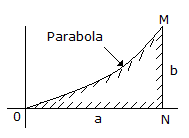Discussion
Home ‣ Civil Engineering ‣ Soil Mechanics and Foundation Engineering See What Others Are Saying!
- Question
A flow line makes angles ?1 and ?2 with the normal to the interface of the soils having permeabilities k1, k2 before and after deflection. According to the law of deflection of the flow lines at the interface of the dissimilar soils
Options- A.

- B.

- C.

- D.

- Correct Answer

- 1. The c.g. of the shaded area of the below figure from the x-axis is

Options- A.

- B.

- C.

- D.

- E.
 Discuss
Discuss
- 2. A single angle in tension is connected by one leg only. If the areas of connecting and outstanding legs are respectively a and b, net effective area of the angle, is
Options- A.

- B.

- C.

- D.

- E. none of these. Discuss
- 3. Maximum size of clay particles, is :
Options- A. 0.002 mm
- B. 0.04 mm
- C. 0.06 mm
- D. 0.08 mm
- E. 1 mm Discuss
- 4. A water treatment plant is required to process 28800 m3/d of raw water (density = 1000 kg/m3, kinematic viscosity = 10-6 m2/s). The rapid mixing tank imparts tank a velocity gradient of 900s-1 to blend 35 mg/l of alum with the flow for a detention time of 2 minutes. The power input (W) required for rapid mixing is
Options- A. 32.4
- B. 36
- C. 324
- D. 32400 Discuss
- 5. Drop manholes are the manholes
Options- A. without entry ladders
- B. without manhole covers
- C. with depths more than 3.5 m
- D. having drains at different levels. Discuss
- 6. Polaris is usually observed for the determination of the azimuth when it is
Options- A. at culmination
- B. at elongation
- C. neither at culmination nor at elongation
- D. either at culmination or at elongation. Discuss
- 7. The low voltage porcelain is mainly used for
Options- A. switch block
- B. insulating tubes
- C. lamp sockets
- D. All of these. Discuss
- 8. Design of flexible pavements is based on
Options- A. mathematical analysis
- B. empirical formulae
- C. a compromise of pure theory and pure empirical formula
- D. none of these. Discuss
- 9. The stress at which extension of a material takes place more quickly as compared to the increase in load, is called
Options- A. elastic point
- B. plastic point
- C. breaking point
- D. yielding point. Discuss
- 10. Rail section is generally designated by its
Options- A. total weight
- B. total length
- C. weight per metre length
- D. area of its cross-section. Discuss
More questions
Correct Answer:

Correct Answer:

Correct Answer: 0.002 mm
Correct Answer: 32400
Correct Answer: having drains at different levels.
Correct Answer: at elongation
Correct Answer: All of these.
Correct Answer: a compromise of pure theory and pure empirical formula
Correct Answer: yielding point.
Correct Answer: weight per metre length
Comments
There are no comments.More in Civil Engineering:
Programming
Copyright ©CuriousTab. All rights reserved.
